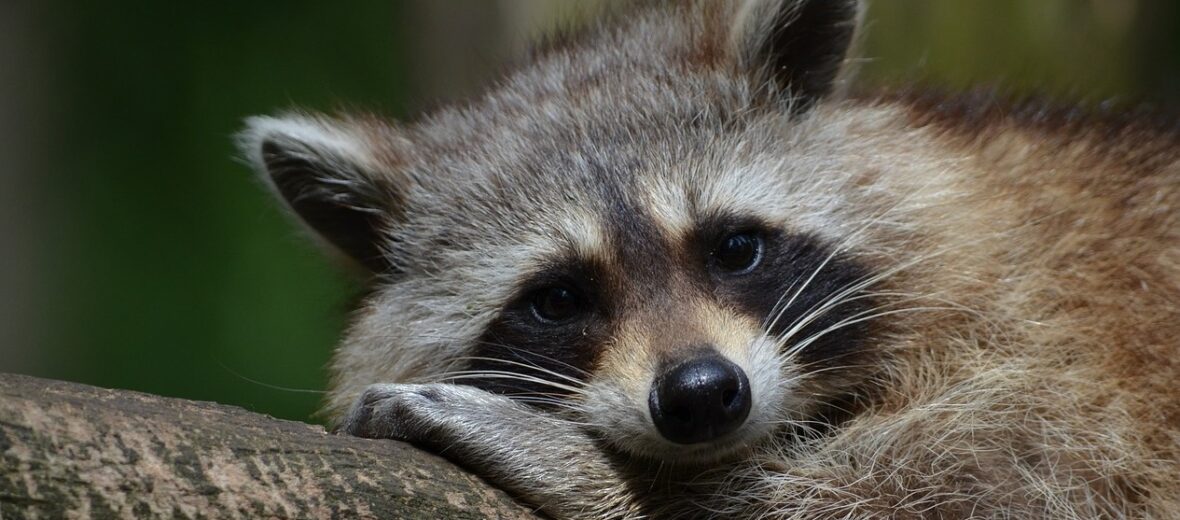
Occupying forests, deserts, urban, and rural areas, you’ve got a good chance at seeing a raccoon. The English word raccoon comes from the Powhatan word “aroughcun”, which translates to “animal that scratches with its hands.” The Aztecs also named the coon “mapachitli” which means “one who takes everything in its hands.” In Spanish “mapache” means “raccoon”. These critters are known for their dexterous abilities and being able to easily navigate garbage cans, earning them the nickname trash pandas.
First the Stats…
Scientific name: Procyon lotor
Weight: Up to 20 lbs.
Length: Up to 28 inches, plus their 16 inch tail
Height: Up to 12 inches, at the shoulder
Lifespan: Up to 20 years
Now on to the Facts!
1.) There are 6 known species of raccoon.
2.) The black marking on the eyes actually serves a purpose. They help reduce glare, which allows them to see better at night.
3.) This sometimes invasive species is found worldwide, thanks to humans. People have brought them all over for the fur trade to exotic pets. They inevitably escaped and have thus populated other locales.
4.) In contrast to other animal species, raccoons actually thrive even though their habitat is being destroyed. They are so adaptable that they can flourish in the human world.
5.) They are omnivores (eat plant and animal matter).
But wait, there’s more on the raccoon!
6.) Their menu consists of insects, small mammals, eggs, fruit, seeds, and garbage… of course.
7.) Raccoons are so resourceful that it is conceived that the the city dwelling coons are actually smarter than their forest dwelling counterparts.
Did you know…?
Their hands are so important to them that they actually use them as a secondary form of site and object detection.
8.) A testiment to their intellect comes in the form of a test that scientists conducted that placed marshmallows in a jug of water. Stones were placed next to the jug. The raccoons were shown how to solve the puzzle of obtaining the treats by dropping the stones in the water to raise the level enabling them to grab the tasty confections. 2 of the 8 were able to repeat the example and 1 went a step further and just toppled the jug.
9.) Raccoons produce a wide variety of sounds like hissing, purring, whistling, growling, and more.
10.) Be cautious in approaching one as these critters can transmit rabies to domestic animals and people! Their feces often contains roundworms too.
But wait, there’s still more on the raccoon!
11.) A group of raccoons is called a gaze or a nursery.
12.) They are excellent climbers, as many people know. But did you know that they are also skilled swimmers?
Now a Short Raccoon Video!
Also, check out the Critter Science YouTube channel. Videos added frequently!
Want to suggest a critter for me to write about? Let me know here.



